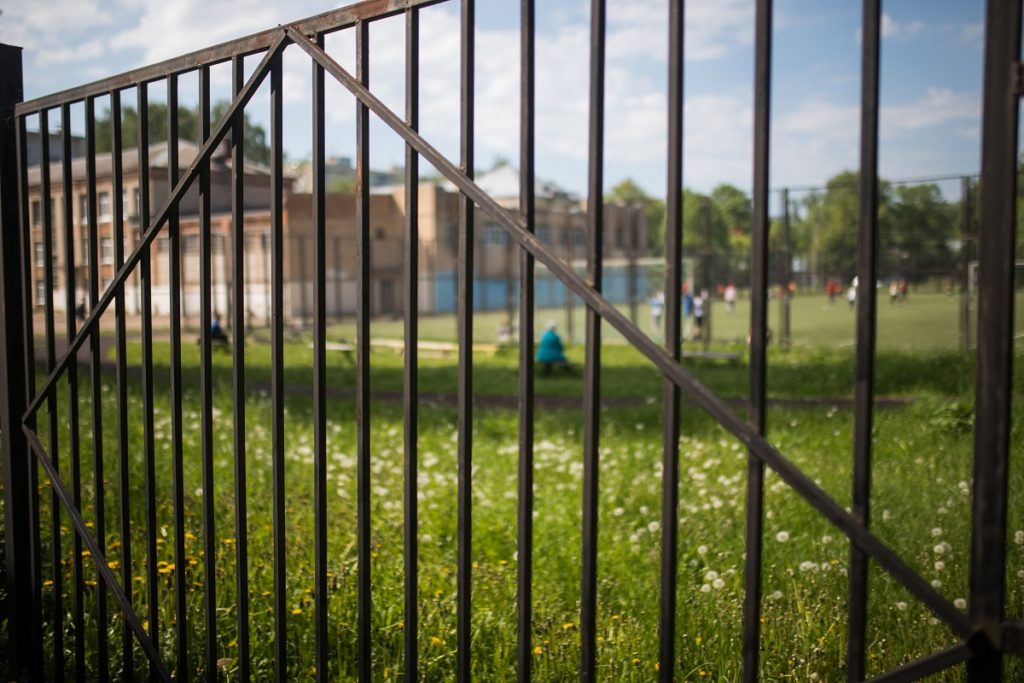Not all houses come with a fence, which is sometimes vital to protecting your house from unforeseeable circumstances. A fence can also work the other way around and keep your children or pets from accidentally going outside the vicinity of your house when you’re not looking. No matter what reason you may have for wanting a fence, there will be added safety and decorative benefits to having one.
However, having a custom fence built can cost you money that you don’t have, especially if you have it created by a landscaper or a contractor. That could be money that you’re saving up for your kid’s necessities or to pay for your bills. So what other choice do you have?
The answer is simple: you can go the DIY route and make your own fence! It’s not as hard as it sounds, but it can be daunting to an amateur builder. Don’t worry, because this is a guide to help you make your own fence in just four easy steps.
The First Step: Getting Permits and Inspecting the Vicinity
Fences aren’t just accessories you put on your house to make it look prettier. These are actual structures that you will be building for your house. So it is important to ask around if you’ll need a permit to raise fences. You can also ask your realtor about your idea to make sure that you’re not disrupting any rules.
After you’ve settled the permits, you can now discuss the house perimeters with your neighbors because you wouldn’t want to build a fence on their land or vice versa. It is common courtesy to ask that when you begin building the fence, it can get a little loud. You can also use that conversation to warn them about your plans and give them a heads up so that they wouldn’t be blindsided.
The last thing you should do before moving on to the next step is to get the vicinity inspected. If you can, contact your utility providers to ask about the ground situation. Mark the places where utility lines pass through and make sure to be careful with them. Otherwise, you might damage some lines that can cost you time, money, or even your life later.
The Second Step: Planning and Designing Your Fence
Once you’ve done all the preparation for your DIY project, you can now begin to sketch your plans for the fence. Search for inspiration online or create your own designs that will fit your personality. You can also go the extra mile and compare the pros and cons of using different steel brands.
Figure out what materials are good for the type of environment and weather conditions you are in. And buy ones that fit your budget because the whole point of making your own fence is to save on money. Get the proper measurements and include them in your planning.
Another important aspect of building a fence is knowing where to get your materials. You can get raw materials to make your fence from scratch, but some services customize metal supplies into the size and shape you want so that you don’t have to do it yourself. Having the materials already prepared can make it easier because all that’s left to do is to assemble the parts and secure them in your house.

The Third Step: Building Your Fence
It’s important to note that the fence has four main parts: the posts, rails, pickets, and the gate. To build a fence, you’ll have to begin with the posts, which are the vertical structures that will line the perimeter of your house. These are anchored to the ground with cement, and the posts act as the main foundation of your fence.
The next part is the rails, which are the horizontal structures that join your posts. Its main purpose is to provide support for the next component of the fence, the pickets. The pickets make up most of the fence you are building, so it is important that all parts are of the same size and shape to keep it uniform.
Attaching the gate will be easy after you’ve built the entire fence. All you need to remember is to attach appropriate hinges, so they can be opened, as well as a latch to keep them closed.
The Fourth (and Final) Step: Stabilizing and Strengthening Your Fence
After finishing all three steps, the only thing left to do is test the strength and stability of your fence. You’ll want a fence that is sturdy enough to last despite being exposed to wear and tear daily. To do that, you might have to introduce reinforcements like braces or additional posts.
But if you believe that your fence can take whatever comes its way, all you have to do is properly maintain it. Maintaining your fence means doing routine inspections for any damages or misalignment. If you want your fence to last, you are responsible for taking care of it.
That’s it. In four simple steps, you will have created an amazing steel fence all by yourself. Some fair warning for you before you take on this project, be very careful with the equipment because you can’t finish the job if you injure yourself. Good luck with your DIY project, handyman!











